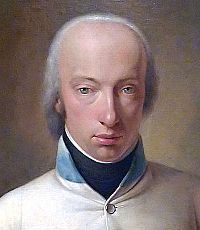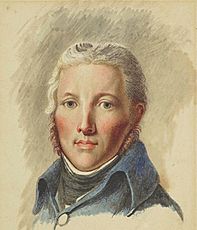Armistice of Steyr facts for kids
The Armistice of Steyr was a special agreement to stop fighting. It was signed between the armies of the Holy Roman Empire and France. This agreement ended the battles in Germany during the War of the Second Coalition.
It was signed on December 25, 1800. The signing happened in the Austrian town of Steyr. The main people who signed it were Archduke Charles of Austria and the French commander, Jean Victor Moreau.
Contents
Why the Armistice Happened
The French army had just won a big battle called Battle of Hohenlinden on December 3. After this loss, Archduke Charles took charge of the imperial armies in Germany on December 17. His main goal was to get a ceasefire.
The imperial armies were very disorganized. Meanwhile, the French commander Moreau had moved past several Austrian forts. These forts could have cut off his supply lines. French cavalry (soldiers on horseback) were also very close to Vienna, the capital city. They were only about 40 miles (64 km) away.
Emperor's Decision
On December 18, Emperor Francis II's foreign minister, Johann Amadeus von Thugut, wrote new instructions. He sent them to his representative in Paris, Ludwig von Cobenzl. Thugut did not want to stop fighting. He wanted to fight "to the knife," meaning to the very end.
However, he told Cobenzl to try for a peace agreement. This was so they could get an armistice. On December 23, Thugut officially wrote a paper giving Cobenzl permission to talk about peace. This decision was a big change for Thugut's policies.
What Happened Next
The Armistice of Steyr only stopped fighting in Germany. It was planned to last for thirty days. But battles between the imperial and French forces continued in Italy.
In Italy, the imperial general Heinrich von Bellegarde had to make his own armistice. He signed it with the French general, Guillaume Brune. This agreement, called the armistice of Treviso, was signed on January 16. News of this armistice took some time to reach Paris.
Britain's Role
The Emperor had promised Great Britain that he would not make peace with France before February. So, he planned to make the peace talks last at least that long.
On December 27, the Emperor told King George III that he could not keep his promise to their alliance. He explained that he was talking to France about peace. On December 31, Cobenzl officially told the French that he would sign a peace treaty without Britain.
Peace in Europe
The Treaty of Lunéville officially ended the war. It was signed on February 9, 1801.



